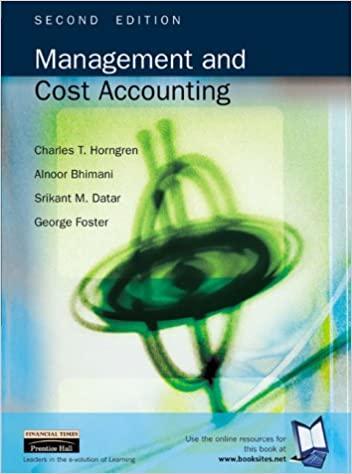
2 Adaptive Expectations Assume that an economy has the Phillips Curve =E[](uun). and assume initially we are at an equilibrium where =E[]=0.07 and u=un=00.6 and assume estimates suggest =0.5. Furthermore, assume it's been determined that Canadian's inflation expectations are best approximated by the following weighted moving average: E[t]=6(3t1+2t2+t3) The economy is chugging along at this equilibrium from our initial period t0 until t2, but in t3 the BoC successfully engages in open market operations (raising interest rates and slowing the growth rate of the money supply) such that they are able to bring inflation down to 2%(3=0.02). Furthermore the successfully hold inflation at 2% from t3 to t7. (You are allowed to use Excel for Questions 2.1 through 2.3, however, by hand is fine as well.) 1. In this scenario, what is the maximum rate of unemployment Canada will hit and in what period will it hit that maximum? 2. How many periods with unemployment be above the NAIRU (i.e., how long with cyclical unemployment be positive)? 3. Graph unemployment through time (so with t0 through t7 on the x-axis). 2 Adaptive Expectations Assume that an economy has the Phillips Curve =E[](uun). and assume initially we are at an equilibrium where =E[]=0.07 and u=un=00.6 and assume estimates suggest =0.5. Furthermore, assume it's been determined that Canadian's inflation expectations are best approximated by the following weighted moving average: E[t]=6(3t1+2t2+t3) The economy is chugging along at this equilibrium from our initial period t0 until t2, but in t3 the BoC successfully engages in open market operations (raising interest rates and slowing the growth rate of the money supply) such that they are able to bring inflation down to 2%(3=0.02). Furthermore the successfully hold inflation at 2% from t3 to t7. (You are allowed to use Excel for Questions 2.1 through 2.3, however, by hand is fine as well.) 1. In this scenario, what is the maximum rate of unemployment Canada will hit and in what period will it hit that maximum? 2. How many periods with unemployment be above the NAIRU (i.e., how long with cyclical unemployment be positive)? 3. Graph unemployment through time (so with t0 through t7 on the x-axis)







